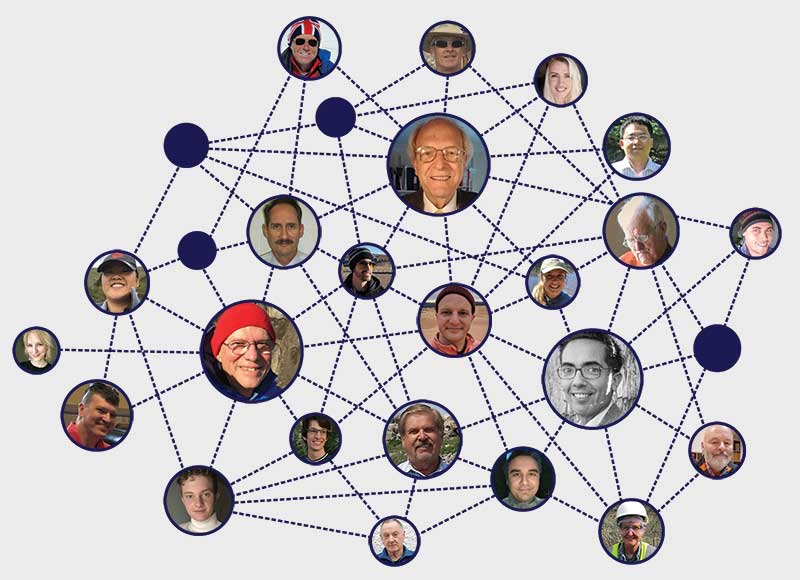 Dark Matter
Dark Matter
A brief explanation of dark matter and
the Standard Model of Cosmology
 Dark Matter
Dark Matter
A brief explanation of dark matter and
the Standard Model of Cosmology

MQN Guide
Much like GPS guides one along a pathway to a destination, we present 8 “waypoints” of relevant information to guide readers through the overall concept.
Peer Reviewed Science
Is there solid science supporting Magnetized Quark Nuggets as a candidate for dark matter?
Dark Matter
Tell me about dark matter and the Standard Model of Cosmology.
Normal Matter and Quarks
Tell me about normal matter, quarks, and the Standard Model of Particle Physics.
Quark Nuggets and Magnetar Pulsars
What do Magnetar Pulsars have to do with Quark Nuggets?
Aggregation vs. Decay
Since Quark Nuggets are not observed in high-energy accelerator experiments, aren’t they excluded as stable particles and therefore cannot be dark matter?
Detection
If MQNs exist, how can they be detected and have they been detected?
Capture
Since MQNs should be indestructible, can their passage through the Sun slow them down enough to make them collectable?
Applications
If MQNs can be collected, what applications might they enable?

People Make Progress
Dark matter[1] is the mysterious stuff that holds the galaxies together and is an essential part of the Standard Model of Cosmology,[2] the very successful theory explaining the Universe from the Big Bang 13.8 billion years ago to today. Evidence of dark matter is most obvious in the rigid-rotor motion of galaxies (as shown in the first video below) versus the multi-velocity rotation of the solar system (as shown in the second video).
The nature of dark matter is one of the biggest challenges in science today.
MQN Guide
Much like GPS guides one along a pathway to a destination, we present 8 “waypoints” of relevant information to guide readers through the overall concept.
Peer Reviewed Science
Is there solid science supporting Magnetized Quark Nuggets as a candidate for dark matter?
Dark Matter
Tell me about dark matter and the Standard Model of Cosmology.
Normal Matter and Quarks
Tell me about normal matter, quarks, and the Standard Model of Particle Physics.
Quark Nuggets and Magnetar Pulsars
What do Magnetar Pulsars have to do with Quark Nuggets?
Aggregation vs. Decay
Since Quark Nuggets are not observed in high-energy accelerator experiments, aren’t they excluded as stable particles and therefore cannot be dark matter?
Detection
If MQNs exist, how can they be detected and have they been detected?
Capture
Since MQNs should be indestructible, can their passage through the Sun slow them down enough to make them collectable?
Applications
If MQNs can be collected, what applications might they enable?

People Make Progress
Dark matter[1] is the mysterious stuff that holds the galaxies together and is an essential part of the Standard Model of Cosmology,[2] the very successful theory explaining the Universe from the Big Bang 13.8 billion years ago to today. Evidence of dark matter is most obvious in the rigid-rotor motion of galaxies (as shown in the first video below) versus the multi-velocity rotation of the solar system (as shown in the second video).
The nature of dark matter is one of the biggest challenges in science today.
Dark matter[1] is the mysterious stuff that holds the galaxies together and is an essential part of the Standard Model of Cosmology,[2] the very successful theory explaining the Universe from the Big Bang 13.8 billion years ago to today. Evidence of dark matter is most obvious in the rigid-rotor motion of galaxies (as shown in the first video below) versus the multi-velocity rotation of the solar system (as shown in the second video).
The nature of dark matter is one of the biggest challenges in science today.
MQN Guide
Much like GPS guides one along a pathway to a destination, we present 8 “waypoints” of relevant information to guide readers through the overall concept.
Peer Reviewed Science
Is there solid science supporting Magnetized Quark Nuggets as a candidate for dark matter?
Dark Matter (above)
Tell me about dark matter and the Standard Model of Cosmology.
Normal Matter and Quarks
Tell me about normal matter, quarks, and the Standard Model of Particle Physics.
Quark Nuggets and Magnetar Pulsars
What do Magnetar Pulsars have to do with Quark Nuggets?
Aggregation vs. Decay
Since Quark Nuggets are not observed in high-energy accelerator experiments, aren’t they excluded as stable particles and therefore cannot be dark matter?
Detection
If MQNs exist, how can they be detected and have they been detected?
Capture
Since MQNs should be indestructible, can their passage through the Sun slow them down enough to make them collectable?
Applications
If MQNs can be collected, what applications might they enable?


